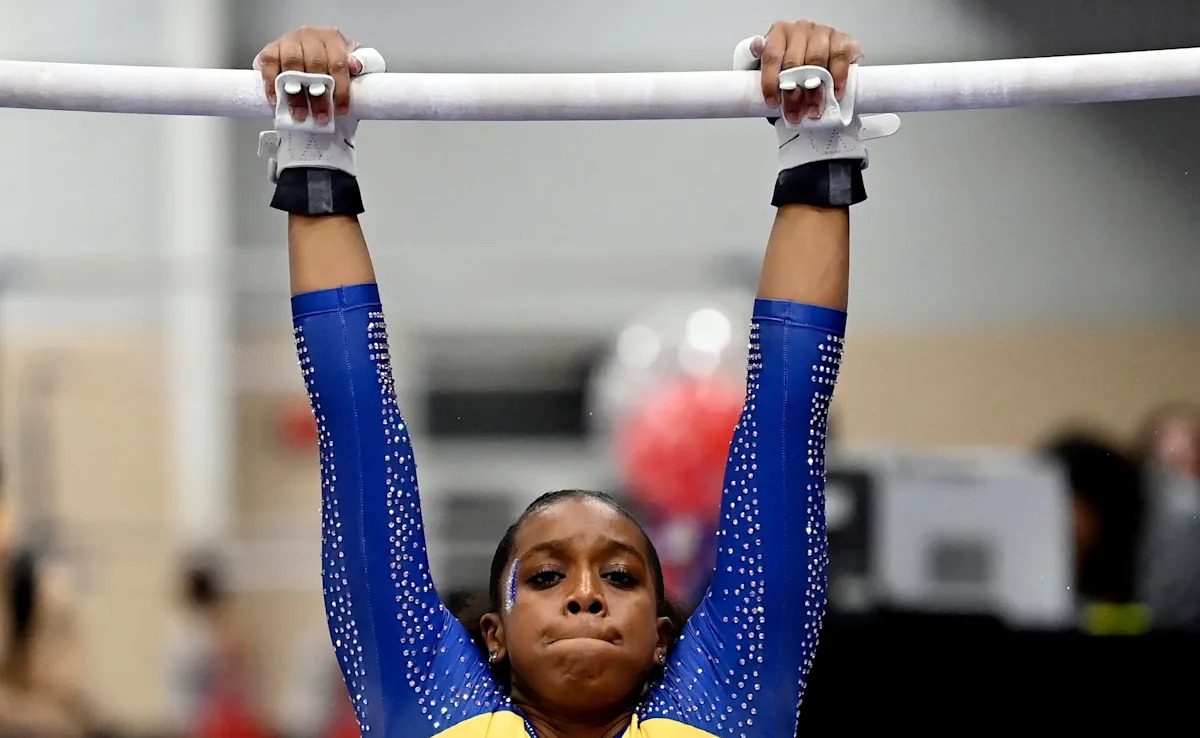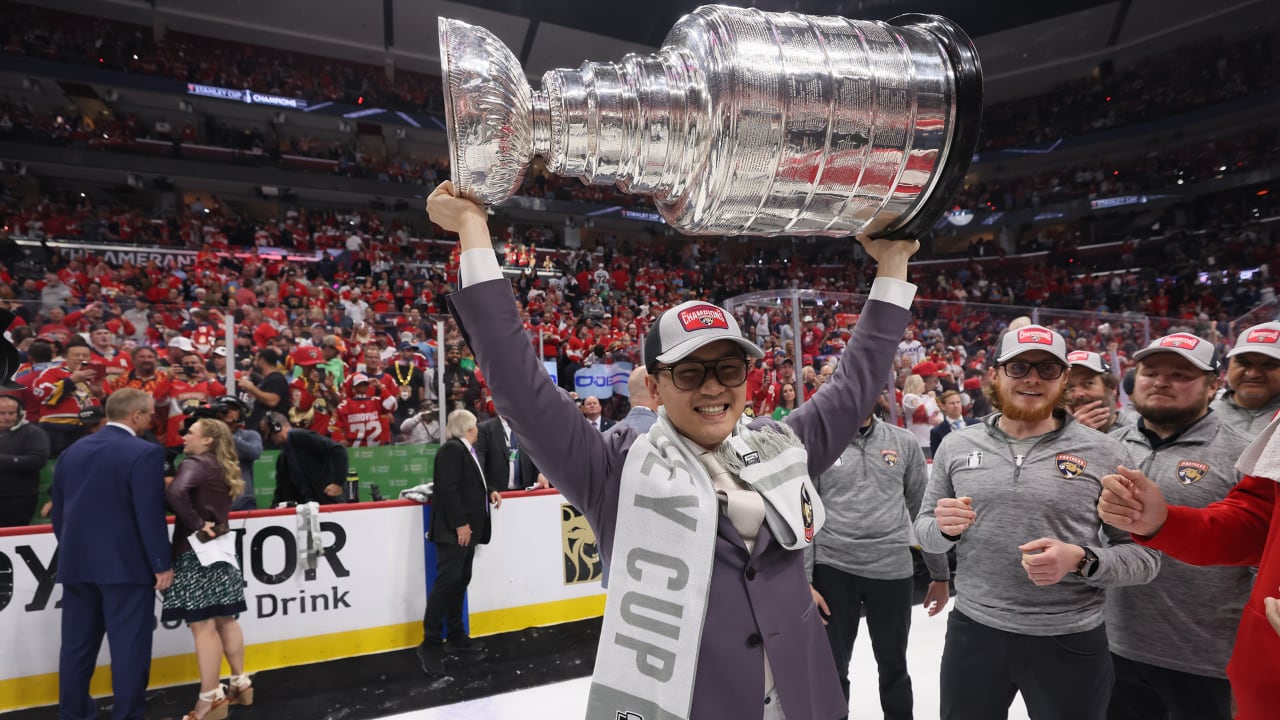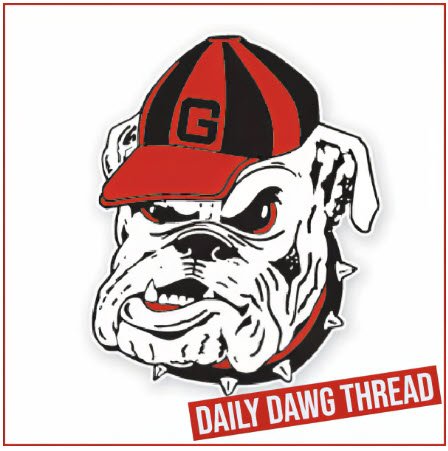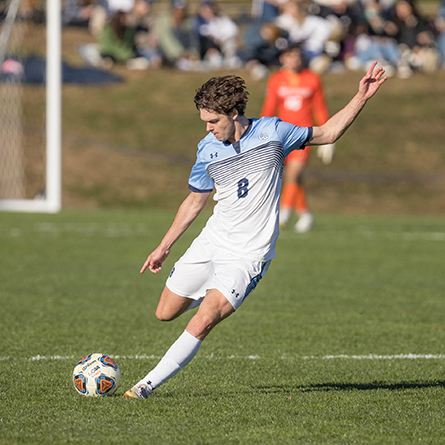College Sports
Nation’s first HBCU gymnastics program at Fisk University to shut down after 2026 season
The first HBCU to have a gymnastics program will participate in its last season in 2026. Fisk University, which began competing in January 2023, will discontinue its program after next season, the school announced last week. Advertisement “Considerable challenges … to schedule competitions and build a robust recruiting pipeline,” were the reasons cited for the […]

The first HBCU to have a gymnastics program will participate in its last season in 2026.
Fisk University, which began competing in January 2023, will discontinue its program after next season, the school announced last week.
Advertisement
“Considerable challenges … to schedule competitions and build a robust recruiting pipeline,” were the reasons cited for the decision on the school’s website. Fisk competes in the HBCU Athletic Conference, and the sport isn’t sanctioned by the conference, resulting in those challenges.
“While we are tremendously proud of the history our gymnastics team has made in just three years, we look forward to focusing on our conference-affiliated teams to strengthen our impact in the HBCU Athletic Conference,” Valencia Jordan, Director of Fisk Athletics, said on the school’s website. “Fisk is grateful for the hard work, dedication and tenacity of its gymnasts, staff members, and coaches who made this program possible.”
The Tennessean has reached out to Jordan for comment.
Fisk University gymnastics had early success
Despite being new on the scene, Fisk’s gymnastics team has experienced some success.
Advertisement
Morgan Price of Lebanon became the first gymnast from an HBCU to win the all-around championship at the USA Gymnastics Women’s Collegiate National Championships in 2024. She repeated the feat in 2025.
“It feels good because of the hard work that has been put in,” Price said in a release after the first title. “Honestly, I didn’t know where I would place, but it was a pleasant surprise. I have heard from a lot of people so far. I am still trying to take all this in.”
Price, Allie Berkley, Aliyah Reed-Hammon, and Ciniah Rosby each earned first-team All-American honors for the 2025 season.
Paul Skrbina is a sports enterprise reporter covering the Predators, Titans, Nashville SC, local colleges and local sports for The Tennessean. Reach him at pskrbina@tennessean.com and on the X platform (formerly known as Twitter) @paulskrbina.
This article originally appeared on Nashville Tennessean: Fisk gymnastics, nation’s first HBCU program, to shut down after 2026
College Sports
Bruins’ draft choice has turned unusual upbringing into a unique skillset
BRIGHTON, MA – JUNE 30: Boston Bruins prospect William Moore skates with the puck during Boston Bruins Development Camp on June 30, 2025, at Warrior Ice Arena in Brighton, MA. (Photo by Erica Denhoff/Icon Sportswire via Getty Images) Icon Sportswire via Getty Images BOSTON — If he becomes a successful NHL player someday, Will Moore’s piano-playing […]

BRIGHTON, MA – JUNE 30: Boston Bruins prospect William Moore skates with the puck during Boston Bruins Development Camp on June 30, 2025, at Warrior Ice Arena in Brighton, MA. (Photo by Erica Denhoff/Icon Sportswire via Getty Images) Icon Sportswire via Getty Images
BOSTON — If he becomes a successful NHL player someday, Will Moore’s piano-playing prowess will be one of those factoids national TV broadcasters will trip over themselves to tell the viewer.
Like how Patriots receiver Chris Hogan used to play lacrosse or that Ben Roethlisberger has more wins in the Browns’ stadium than any Cleveland quarterback.
That’s naturally a pretty big if for the Bruins’ second-round pick in last weekend’s NHL Draft. But Moore’s progress, like his backstory, should be interesting to monitor.
“He seems like a really bright kid who really thinks outside the box,” said Bruins’ director of player development Adam McQuaid after the first day of development camp. “You can really see that in the way he plays.”
Moore’s unusual approach comes from unusual roots. His parents, Patrick and Vanusa, have lived in Brazil and Switzerland as well as the United States and Canada. But they nurtured his considerable intellectual, artistic and athletic gifts throughout his life.
He was a skilled violinist as a child, but it was on piano where Moore won the Little Mozarts International Competition and played at Carnegie Hall as a 10-year-old. He liked trying stuff and was usually good at whatever he dug into.
When he picked up hockey while living in Toronto, while his family had no history with the sport, they embraced his love of it.
Moore’s virtuosity on skates earned him a spot in the prestigious U.S. National Team Development Program, where he played each of the last two seasons. His two strong years there led to a scholarship at Boston College and put him high on draft boards around the NHL. The Bruins took the 6-foot-2, 174-pound forward in the second round, 51st overall.
Moore is proud of his intellect and mentioned it quickly at development camp last week when asked what Bruins fans could expect from him.
“I’m a big body, but I provide a highly dynamic offensive game. I think I have a high IQ. My main strength is playmaking and making my linemates better,” he said.
But his talent on the ivory and on ice are more than just a fun coincidence. The way he plays hockey and piano both indicate an aptitude for creative learning.
“I think there are things in music that translate directly, soft hands, creativity, ability to improvise, and those, those go directly to hockey,” Moore said. “There are a lot of on-the-spot decisions, a lot of different things going on, a lot of different things you’re looking at.”
Musically, his interests range from country to electronic dance music, which are almost as different as hockey and Mozart. The complexity of EDM appeals to his curious nature.
“It’s pretty intricate beat producing. I love all different layers of that type of music. I love listening to that,” he said. “I appreciate how difficult it is to make that sort of stuff.”
It’s not entirely unlike what awaits him in Chestnut Hill, where both music and hockey will be part of his Boston College experience.
“He’s a unique kid. I think he’ll thrive in the BC environment on and off the ice,” Bruins general manager Don Sweeney said. “He was fun to get to know a little bit at the combine and have our guys get to know throughout the year.”
Moore picked BC because he hoped coach Greg Brown and his staff would push him to new levels on the ice, but he was eager to absorb the rest of what Boston College had to offer, as a freshman this fall.
Moore will join a loaded Eagles roster, which will include six Bruins draft choices. He wasn’t sure what he planned to major in yet, but whether or not he focuses on it, music will be part of his course load.
“I love learning. I love adding new things to my game,” he said. “I love learning new things off the ice. I think it’s great, especially when you can be creative in other ways and just keep developing your mind in a unique way. I think it helps with hockey and it’s also great to just put your mind on other things.”
Sweeney, who went to Harvard, didn’t try to connect power plays and piano skills. But in Moore, he simply sees an achiever.
“He really plays piano and he’s damn good at it. He values the hard work and the ambition that (his parents) have. He applies that in every way,” Sweeney said. “He’s a good student. With the piano he was dedicated. In hockey, he’s very dedicated. Those are kids that find a way to excel in whatever they choose to do.”
If you purchase a product or register for an account through a link on our site, we may receive compensation. By using this site, you consent to our User Agreement and agree that your clicks, interactions, and personal information may be collected, recorded, and/or stored by us and social media and other third-party partners in accordance with our Privacy Policy.
College Sports
Color of Hockey: Bark ‘can do everything’ in Panthers front office
Still, Bark thrived and moved on to Lake Forest College, an NCAA Division III school in Lake Forest, Illinois, where he had 67 points (17 goals, 50 assists) in 75 games as a center from 2009-13. He was named team captain his senior season, but injuries limited him to one game. “I was the shortest […]

Still, Bark thrived and moved on to Lake Forest College, an NCAA Division III school in Lake Forest, Illinois, where he had 67 points (17 goals, 50 assists) in 75 games as a center from 2009-13. He was named team captain his senior season, but injuries limited him to one game.
“I was the shortest guy on the team (5-7, 170),” he said. “Maybe you call it passionate and fiery, and I call it kind of stupid, but I thought I was 6-foot-2. So that led to a lot of unnecessary head trauma.”
His injury history, however, led to a life-changing opportunity. Zito was looking for some help in 2011 when he was president and co-founder of Acme World Sports, a Chicago-based agency that represented several of the NHL’s top players. Justin Taylor, a forward for Lake Forest in 2009-10 and the son of Tim Taylor, Zito’s hockey coach at Yale University from 1984-87, recommended Bark.
“He said, ‘My buddy ‘Barks,’ he got hurt, he’s not traveling this weekend, he’ll do it for you, he’s a great guy,’” Zito said. “’Oh, and maybe he wants an internship or something.’ Okay, he’s an intern. He gets in there and we’re, like ‘Oh, my God.’”
Bark became an associate for Acme from 2012-15, supporting agents in operations, regulatory compliance, contracts, global market dynamics and hockey analysis.
“That was the most fun stuff,” he said. “People use the term ‘family’ a lot in business settings. But working with that agency, seeing the bond these guys formed with players, with people, as you help them achieve their dreams. I mean, that’s as strong as it gets, bordering maybe on something you could call familial.”
Zito was so impressed with Bark’s work that he invited him to be a part-time analyst for the Columbus Blue Jackets while attending the Moritz School of Law at Ohio State University, when Zito was an assistant general manager under GM Jarmo Kelalainen with Columbus.
The part-time gig turned into full-time employment and five seasons with the Blue Jackets, with whom Bark rose to manager of scouting operations and player evaluation.
“It was an incredible experience because the Blue Jackets at the time, we were a draft and develop team,” he said. “There was a heavy focus on the amateur draft and having the right pieces to build that team. It was a multifaceted experience, and it shaped a lot of how I view player evaluation and how scouting operations should run.”
College Sports
Flyers, Porter Martone to have conversation about playing in NCAA
There is a big decision looming for top Philadelphia Flyers prospect Porter Martone, and him and the team are scheduled to have a conversation regarding this decision in the next couple of weeks. We are in a new era of prospect development for this sport. With the new agreement between the CHL and NCAA, where […]

There is a big decision looming for top Philadelphia Flyers prospect Porter Martone, and him and the team are scheduled to have a conversation regarding this decision in the next couple of weeks.
We are in a new era of prospect development for this sport. With the new agreement between the CHL and NCAA, where players no longer have to pick a lane when they’re 15 years old and can now switch between the two major North American development leagues before players turn pro. As long as a player is not signed to an NHL team, they can go between college hockey and Canadian juniors if they so please.
This is provides a major stepping stone for some players and one of the key players that will need to make a decision is Flyers first-round pick Porter Martone.
The 18-year-old winger was simply one of the best players in the OHL and arguably the entire CHL last season for the Brampton Steelheads. Even before he was drafted, he put up a nearly triple-digit point total and while other players produced just as much, Martone was miles ahead of those peers physically.
Given that level of success and draft pedigree after the Flyers selected him with the sixth overall draft pick last month, multiple schools are clamoring for Martone to commit to them and take that next step in his hockey development. Despite that, the player himself has recently said that his goal is to make it to the NHL for next season.
While that is absolutely the mindset you want your top prospect to have, it gets a little bit tricky. There is no denying that in a vacuum, Martone should play in college next season. He is too good to return to the OHL but is not one of those franchise-changing talents that can waltz right into the NHL and make an impact. It’s the perfect middle ground — a stepping stone to play against older players and face a higher level of competition before signing with the Flyers potentially at the end of next season.
Therefore, it’s going to be a conversation.
“Martone obviously has all kinds of offers,” Flyers assistant general manager Brent Flahr said Sunday. “He wants to play in the NHL and that’s a discussion we’ll have with his agent. As much as we want him to play, we have to make sure we do what’s best for him. We’ll figure that out in the coming weeks and see what he wants to do, and go from there.”
While it won’t be a drastic decision one way or the other, and Martone will still likely turn into a very good NHL player at the end of the day, it is still fairly important what path he chooses to go down for next season.
Heading to college hockey is the most stable but it also prevents Martone from getting the experience of an NHL training camp this fall, as he would be ineligible to participate and the next time we could see him in Flyers colors would have to wait until next spring when he inevitably signs his NHL contract after his college season ends.
Trying his best to make the NHL is riskier and could lead him to playing in a not-so-great development environment. If Martone makes the Flyers full-time, that’s great. It might not be ideal for those who would rather see prospects gradually climb the proverbial hockey ladder, but it would at least be exciting. But regardless, if Martone decided to go down this path, he would have to sign his NHL entry-level contract and that would prevent him from playing college hockey at all.
So, with his shiny new contract, if Martone doesn’t make the Flyers or just plays a few games like Jett Luchanko did at the start of last season, that means he has to go back to the OHL’s Brampton Steelheads. Unfortunately, that would be going back to a Steelheads team that has been torn apart by either graduating players or prospects heading to college hockey.
All seven of the top scorers on last year’s Steelheads squad except Martone, are not returning next season. Plus, they just lost their goaltender Jack Ivankovic to the University of Michigan. And to make this much more dramatic, because of the new NCAA-CHL agreement taking place, this is a weakened OHL — a junior league that now has even fewer top prospects because some of them are now playing NCAA hockey instead.
That doesn’t feel like a great environment for Martone to really further his game and get better at the areas of the game he needs to improve. It would just be letting him plateau but be a year older when he tries to make the NHL as a full-time player and being slightly more comfortable with it.
So, all of that is to say that it would make sense if the Flyers are going to try to push Martone over to college hockey, even if the player seems passionate about trying to play in NHL games as soon as possible.
Luckily, we’re dealing with a very mature prospect. Someone who has captained multiple teams and is miles ahead in between the ears compared to other past prospects.
“To see his maturity, how he handles himself around the group and even around you guys,” Flahr said to the media. “He’s a pretty comfortable kid. I think once he gets around NHL players he’s going to stand out even more. I think he’s a player that’s always looking around, learning. The pace of his game is going to have to pick up, but you see the hands, the vision, the ability to make plays very few guys even on our big team can make. There’s a process, he’s a young guy, but we’ll see what he can do.”
College Sports
July 07, 2025 – Bulldawg Illustrated
Jump To Top of Page UGA Uses of NIL Fines to Curb Off-Field Behavior As the Georgia Bulldogs gear up for another shot at the national title in 2025, they’re also pioneering a new approach off the field. Following a series of off-field incidents, particularly those involving speeding and reckless driving, Kirby Smart’s program has […]

Jump To Top of Page
UGA Uses of NIL Fines to Curb Off-Field Behavior

As the Georgia Bulldogs gear up for another shot at the national title in 2025, they’re also pioneering a new approach off the field. Following a series of off-field incidents, particularly those involving speeding and reckless driving, Kirby Smart’s program has implemented a groundbreaking solution: utilizing Name, Image, and Likeness (NIL) fines to enforce discipline. This unique strategy sets them apart in the world of major college football.
A Crisis of Conduct
Georgia’s off-field problems, particularly with traffic violations, have caused a storm of finger-pointing and harrumphing. However, there have been tragic consequences involving UGA players and cars, as well as a number of unsafe incidents.
The most tragic moment came in January 2023, when a high-speed crash claimed the lives of offensive lineman Devin Willock and recruiting staffer Chandler LeCroy. Despite increased awareness and internal efforts to curb dangerous driving, violations continued.
Turning to NIL for Discipline
At this year’s SEC Spring Meetings, Kirby Smart made headlines by confirming that Georgia’s NIL collective, the Classic City Collective, has begun issuing financial penalties to players for off-field behavior.
“It’s really trying to punch the pocketbook,” Smart said. “They feel that more than they do anything else.”
Some players have reportedly had large payments withheld over conduct violations, particularly reckless driving.
How the NIL Fines Work
Through contracts that include morality clauses, the collective can fine players or withhold NIL payments if they engage in dangerous behavior—such as driving at high speed.
Smart emphasized that the intent isn’t punitive—it’s corrective: “We don’t get to decide what the collective does. But we’re in communication with them about our expectations. They know what’s important to us.”
A New Culture in Athens
The policy is already changing the internal culture. Senior leaders have begun to view fines as a tool for accountability, particularly now that financial consequences are tied to specific behaviors. One player mentioned to The Athletic, “This is a team, not a bank. If you mess up, it costs you.” Players receive a briefing on the policy as soon as they arrive on campus, and the potential loss of NIL (Name, Image, Likeness) money has introduced a new level of personal responsibility.
Legal and Ethical Red Flags
While the policy may work in the locker room, legal experts warn that it could cross the line.
“If you’re docking pay based on behavior, you’re entering the realm of employment law,” said sports law analyst Michael McCann. “That’s tricky when the NCAA insists players aren’t employees.”
Recruiting Risks and Rewards
From a recruiting perspective, Georgia’s NIL discipline model is a double-edged sword.
Some parents and high school coaches may welcome the structure, seeing it as a sign of maturity and character development. Others may view it as an overreach, particularly when other programs offer similar NIL money without the strings attached.
Still, Georgia continues to thrive on the trail. In fact, the last few weeks have produced an exceptional haul of high school talent. Whether NIL fines will eventually impact recruiting success remains to be seen.
Leading the Way—or Taking a Risk?
Georgia might be the first major program to link NIL (Name, Image, Likeness) compensation to off-field behavior, but it likely won’t be the last. If this policy proves effective in reducing violations and avoids legal issues, other programs will likely adopt similar measures. Collectives are rapidly evolving, and many are looking for ways to connect financial investments with character and conduct.
However, Coach Smart remains cautious: “I don’t think NIL alone is going to fix it. It’s just one piece of the puzzle. We’re still focused on mentoring and having discussions. NIL simply adds another layer.”
As we enter the 2025 season, Georgia’s use of NIL fines could become a defining storyline, not just in Athens but across the college football landscape.
It’s a test case for how schools can balance new athlete freedoms with old-school discipline. And it could shape the future of NIL as more than just a market but a carrot/stick mechanism for team control.
For now, Georgia is taking the lead; whether it continues or falls behind depends on how well the Bulldogs can walk the tightrope between freedom and responsibility in college football’s new era.
Jump To Today’s Discussion Thread
College Sports
How Penn State Is Capitalizing on the New Era of College Hockey
In November 2024, the NCAA Division I Council changed the landscape of college hockey forever by permitting Canadian Hockey League (CHL) athletes to compete in NCAA games. The new rule takes effect Aug. 1, and college teams are positioning themselves to sign the best young players from the CHL. What does this mean for Penn […]

In November 2024, the NCAA Division I Council changed the landscape of college hockey forever by permitting Canadian Hockey League (CHL) athletes to compete in NCAA games. The new rule takes effect Aug. 1, and college teams are positioning themselves to sign the best young players from the CHL.
What does this mean for Penn State hockey, and how are the Nittany Lions approaching their post-Frozen Four future? Here’s a look at how Penn State seeks to capitalize on the influx of new talent into college hockey.
RELATED: Penn State left the Frozen Four hopeful about its future
New talent pours into NCAA hockey
Between the ages of 16-20, players with NHL aspirations often choose one of two routes to develop and prepare for professional hockey. Athletes may choose the CHL, where the premier junior hockey players of the world compete before their transition into the NHL. Or they might commit to an NCAA program.
While college hockey churns out professional players every year, the talent difference between the NCAA and the CHL is substantial. Twenty-one CHL athletes were selected in the first round of the 2025 NHL Entry Draft, compared to just five from NCAA programs.
Before the new legislature, players who signed CHL deals couldn’t begin their playing careers in Canada and then transfer to the NCAA. But now, CHL players are flooding into college hockey, making it a prime spot for NHL prospects to develop.
Penn State adapted to the new circumstances almost immediately, bringing in six CHL athletes: Jackson Smith, Shea Van Olm, Lev Katzin, Luke Misa, Nolan Collins and Joshua Fleming. And the Nittany Lions are looking for more, having been linked to Gavin McKenna, the projected No. 1 overall pick of the 2026 draft.
The deal has changed college hockey forever as more top-end talent will commit to NCAA programs, leading to higher traction for the sport.
Revenue sharing plays a big role
In June, Judge Claudia Wilken approved the $2.8 billion House v. NCAA settlement regarding payments to former, current and future players. The settlement allows schools to pay athletes directly, which gives the NCAA an advantage on the CHL.
The CHL provides players with stipends and benefits, arguing that they’re amateurs, similar to the former NCAA position. Through revenue sharing, some NCAA programs can offer players higher earnings.
Penn State has not released its revenue-sharing breakdowns, including how much men’s hockey will receive, but coach Guy Gadowsky appears to have access to funding that allows him to offer some of the top CHL prospects. Generally, Penn State believes it is well-positioned to take advantage of revenue sharing beyond football, as Athletic Director Pat Kraft has said.
“We’re trying to be able to manage the money so that if we need to move on someone, no matter what the sport is, we have the ability to say, ‘Hey, there’s the No. 1 fencer in the world, and we need to go use rev share to maybe tilt it our way,'” Kraft said. “We’re going to be able to do that.”
“I appreciate how much love [Penn State] showed me throughout the process…The way they play and how I play, I think it’s a great fit!”
Caught up with our newest Nittany Lion and first round draft pick Jackson Smith at @BlueJacketsNHL Dev Camp this week!#WeAre #HockeyValley pic.twitter.com/esob37P9yu
— Penn State Men’s Hockey (@PennStateMHKY) July 3, 2025
How Penn State is capitalizing on college hockey’s new era
Penn State is pursuing some of the top young prospects in hockey. The Nittany Lions received a commitment from Smith, who became the program’s first player to be a first-round pick in the NHL Entry Draft. Penn State also reportedly has been connected with Porter Martone, the Philadelphia Flyers’ No. 6 overall pick of the draft, and McKenna, the consensus top player of the 2026 NHL Draft cycle.
Dating to June, the McKenna sweepstakes reportedly has been a two-team race between Penn State and Michigan State. Sportsnet’s Elliotte Freedman Friedman mentioned Penn State as McKenna’s most likely destination on the 32 Thoughts hockey podcast. Hockey journalist Frank Servalli further reported that McKenna recently visited State College. McKenna could announce a decision at any time.
While Penn State is an attractive destination following its Frozen Four run, the program’s ability to offer Smith and other athletes competitive deals has contributed to its offseason success. Combined with the lessons his team learned last season, Gadowsky said he is “very optimistic” about Penn State’s future.
“It’s not just a lesson in hockey for next year … but it’s a lesson that these guys are going to carry with them well beyond Penn State and also well beyond hockey,” Gadowsky said after the Frozen Four. “It’s true. You can talk about it as much as you want: ‘Oh, that’s the way to do things.’ But when you’re really faced with a challenge and you’re really in a down spot and you pull each other together and lift each other up and you see success, it’s something you don’t forget. For not only because of the young talent but because of the lessons we learned, yes, I’m very optimistic about the future.”
More Penn State Sports
College Sports
Middlebury soccer wins NCAA semifinal
Middlebury’s Abigail Blyler dribbles the ball during a women’s college soccer game earlier this year. Provided Photo GREENSBORO, N.C. — The Middlebury women’s soccer team made the most of its only shot on goal Friday night to earn its first NCAA finals appearance in program history. Simone Ameer started the game on the bench and […]



Middlebury’s Abigail Blyler dribbles the ball during a women’s college soccer game earlier this year.
GREENSBORO, N.C. — The Middlebury women’s soccer team made the most of its only shot on goal Friday night to earn its first NCAA finals appearance in program history.
Simone Ameer started the game on the bench and ended up the hero during a 1-0 Division III semifinal victory over top-ranked Washington University-St. Louis (21-1). Forward Ellie Greenberg assisted Ameer in the 49th minute and Panthers goalie Ursula Alwang (three saves) recorded her ninth solo shutout of the season.
-

 College Sports1 week ago
College Sports1 week agoWAC to Rebrand to UAC, Add Five New Members in 2026
-

 Technology3 weeks ago
Technology3 weeks agoPolar is teasing a Whoop alternative without subscription
-

 Technology3 weeks ago
Technology3 weeks agoI loved the Whoop MG, but didn’t love the price: that’s why I’m excited about this mysterious new fitness band from a major Garmin rival
-

 Motorsports7 days ago
Motorsports7 days agoWhy Cosmetics are Making Up for Lost Time in Women’s Sports
-

 Professional Sports2 weeks ago
Professional Sports2 weeks agoAlex Pereira responds to rumors of UFC heavyweight title fight with threatening message
-
College Sports2 weeks ago
Women's Basketball Thanks Shannon LeBeauf for 14 Seasons
-

 College Sports2 weeks ago
College Sports2 weeks agoAlabama Basketball
-

 Motorsports2 weeks ago
Motorsports2 weeks agoNASCAR This Week – Patriot Publishing LLC
-

 Technology1 week ago
Technology1 week agoPet fitness and wellness trends for a healthier and happier dog
-

 Health3 weeks ago
Health3 weeks agoSpeakers continue to weigh in on transgender athlete debate at District 203 board meeting
































